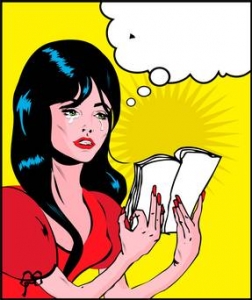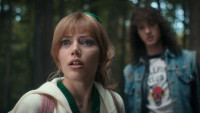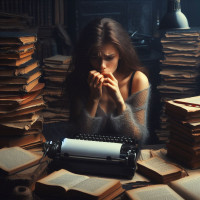Setting the scene

By Ken Brosky
Editor-in-Chief, Brew City Magazine
firstwriter.com – Saturday November 24, 2007
Too many writers in today's age leave too much to their readers' imaginations, omitting key details in scenes that are just as important as the characters involved or their dialogue, threatening the image of "floating heads".
The "Scene" is the place where an event is unfolding. It is, essentially, what lies underneath the characters' feet at any given time. In a broader sense, the "Scene" is the setting in a particular chapter or moment of narration. And setting the scene is one of the elements that can create a great story.
Here are some basic questions to ask whenever putting characters into a new scene:
1. Where are the characters standing?
2. When are the characters moving?
3. What is happening in the surroundings?
By answering these questions in detail and holding onto them throughout a particular scene, readers will be able to more easily visualise the story.
Where are the characters?
Sometimes, when two characters are on the phone, they might stay still for a long time. But in most situations, characters are moving. They're interacting with their environment, and their placement in any particular scene is essential for a reader to create a good mental image.
Writers often forget to "move" characters between scenes. This can include awkward jumps in time or simply moving the characters somewhere else without explaining how it happened. Always keep in mind that in order for readers to visualise the movements of a character, it is the writer's job to move that character in the narration.
When are the characters moving?
Writers often forget about their characters during dialogue, creating the "Floating Heads" effect: characters are engaged in dialogue, but nothing else is happening. The reader, thusly, is visualising two heads talking and floating in a blank space.
Characters fidget. They move constantly. Their bodies move independently. No-one stands completely still for any given amount of time, and writers should keep this in mind whenever characters are talking or otherwise. Keeping characters placed in the scene will help readers visualise them in a realistic manner.
Character movements can also be keys to understanding those characters. Their reactions and actions tell readers what they are like. For instance, a character who moves often may be nervous. A character who repeatedly scratches his nose may be a habitual liar.
What is happening in the surroundings?
Go out to a coffee shop, or a street corner, or even sit in an empty room. Things are happening. Sounds are coming from somewhere. Clocks are ticking. People are moving, interacting with their environment and every detail that's worth mentioning and should be mentioned. Take every opportunity to paint a realistic, detailed scene by incorporating the surroundings to make it easier for readers to visualise.
Sounds are coming from somewhere. Cars are going by outside. What does that tell the reader about the scene? If you tell the reader that cars are going by outside, then the reader is going to picture a scene with the sound of car engines in the background. These sounds may have an effect on what's happening in the scene.
Clocks are ticking. When should a writer mention this? How about when time is of the essence? When time is being involved in some way? Mention the ticking of the clock more than once and the reader will take it as a clue that this particular sound plays an importance on any of the characters in the scene.
People are moving. Who are moving? Why are they moving? When two of your characters are having a heated discussion in the middle of a crowded coffee shop, how is everyone else reacting? Are some people getting up and leaving? Are others watching intently?
The difference between a bad scene and a great scene is the difference between a dark empty room and a coffee shop. Greatness is in the details, and writers who keep this in mind will already have an advantage over a lot of their competition.
About the Author
Ken Brosky's first novel, Grendel, is now available through Amazon.com. His short stories can also be found in World Audience and WTF Magazine. Ken also provides editing help to other writers at www.FinalDraftLiterary.com and is the editor-in-chief of Brew City Magazine.




 ‘Writing a good sex scene is a skill you hone over and over again’
‘Writing a good sex scene is a skill you hone over and over again’ Ireland's thriving literary magazine scene: space for tradition and experimentation
Ireland's thriving literary magazine scene: space for tradition and experimentation I dread writing any kind of romantic scene – or, even worse, anything remotely sexy
I dread writing any kind of romantic scene – or, even worse, anything remotely sexy 8 Steps to Follow When Writing an Early Death Scene
8 Steps to Follow When Writing an Early Death Scene The Importance of a Great Setting in Crime Fiction
The Importance of a Great Setting in Crime Fiction Debut fiction by women shook up the Indian literary scene in 2019
Debut fiction by women shook up the Indian literary scene in 2019 A matter of perspective
A matter of perspective How to Become a Short Storyist
How to Become a Short Storyist Suspense (A state or condition of mental uncertainty or excitement…)
Suspense (A state or condition of mental uncertainty or excitement…) No more excuses!
No more excuses! firstwriter.com subscriber wins Ruth Rendell Short Story Competition
firstwriter.com subscriber wins Ruth Rendell Short Story Competition How I got a literary agent - An interview with author, Eric Houghton
How I got a literary agent - An interview with author, Eric Houghton How I got my book published - An interview with author, Marion Grace Woolley
How I got my book published - An interview with author, Marion Grace Woolley The story of Tarantula Tide, an award winning children’s novel
The story of Tarantula Tide, an award winning children’s novel New Literary Agent Listing: Gabrielle Demblon
New Literary Agent Listing: Gabrielle Demblon Reading Force is delighted to welcome submissions from adults, children and young people to its 2025 Memoir Writing Competition
Reading Force is delighted to welcome submissions from adults, children and young people to its 2025 Memoir Writing Competition New Publisher Listing: Cicada
New Publisher Listing: Cicada Calling all aspiring authors! Here's your chance to win a one-to-one session with a literary agent - plus £1,500
Calling all aspiring authors! Here's your chance to win a one-to-one session with a literary agent - plus £1,500 New prize for translated poetry aims to tap into boom for international-language writing
New prize for translated poetry aims to tap into boom for international-language writing New Literary Agent Listing: Kaylyn Aldridge
New Literary Agent Listing: Kaylyn Aldridge TikTok parent ByteDance is shutting down its short-lived book publisher
TikTok parent ByteDance is shutting down its short-lived book publisher New Magazine Listing: And Other Poems
New Magazine Listing: And Other Poems New Literary Agent Listing: Helen Lane
New Literary Agent Listing: Helen Lane UK audiobook revenue up by almost a third last year
UK audiobook revenue up by almost a third last year New Publisher Listing: Radio Society of Great Britain
New Publisher Listing: Radio Society of Great Britain New Magazine Listing: Emerge Literary Journal
New Magazine Listing: Emerge Literary Journal New Literary Agency Listing: Ghosh Literary
New Literary Agency Listing: Ghosh Literary New Publisher Listing: Hardie Grant
New Publisher Listing: Hardie Grant
